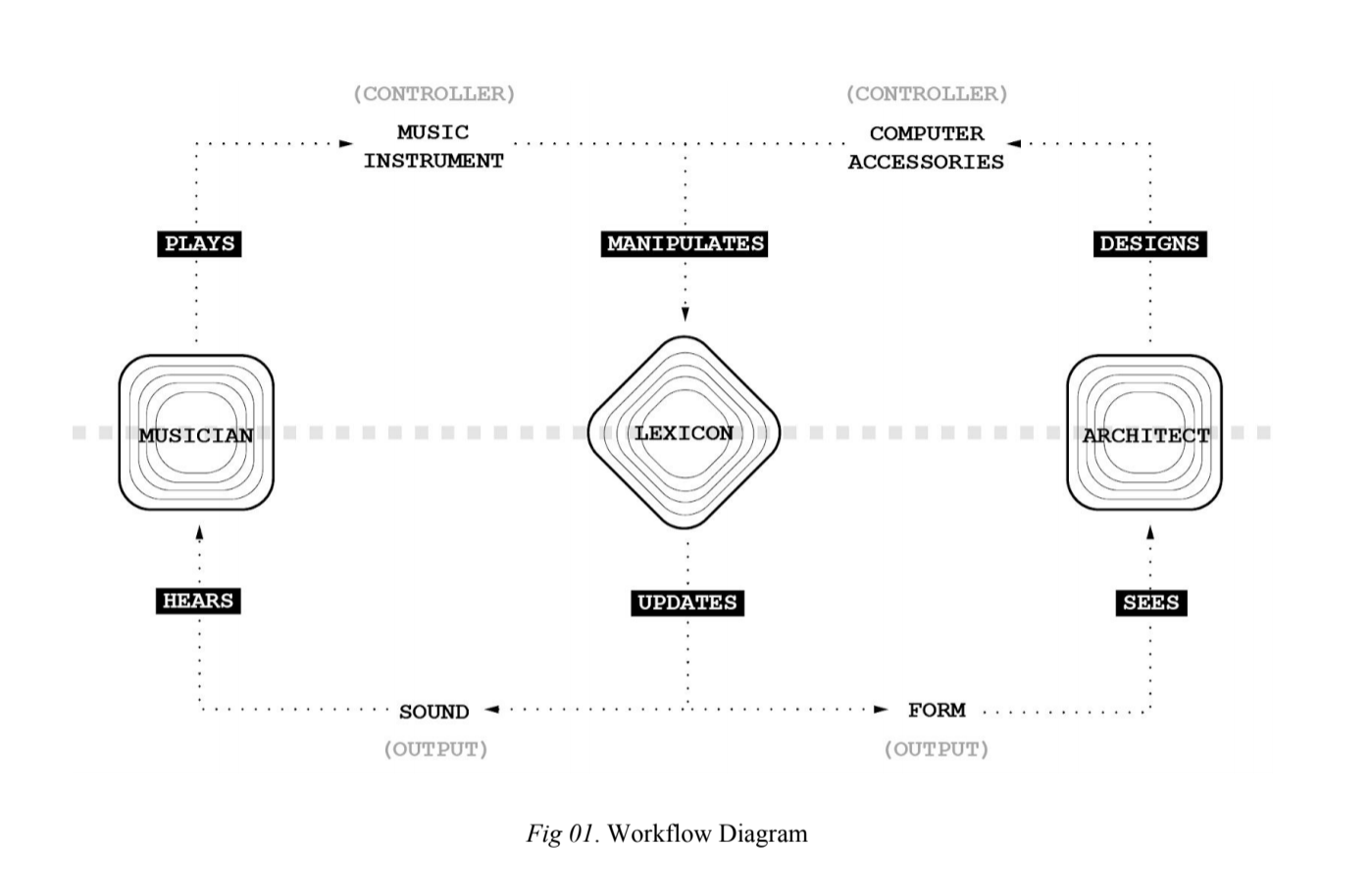Sonic Drawing Machine
Gabriel Guerra, Yangtian Yan, and Senhao Wang (A. Alfred Taubman College of Architecture + Urban Planning), Joseph Mutone (School of Music, Theatre & Dance)
Sound is an inherent characteristic of architecture; any physically constructed space is subject to sonic interactions. Nonetheless, as we observed, partially from working together, architects and engineers are the main determinants in the design of spaces for musical events.
Therefore, we started to think about how musicians can potentially take part in the design process of the space that they would essentially be performing in. This, if being thought of as a design-build project, would be obviously incredibly difficult to achieve. Therefore, if, though still very difficult, the platform of “sonic scenography” which situates the project in the digital realm, does make the project more feasible and gives us a dose of encouragement.
Then, we started with how fundamentally architects and musicians think: although the conclusion involves over-generalization, architects think visually and musicians think sonically. Building upon that assumption, we further delved into the possibility of establishing a lexicon through which architects and musicians can communicate and design space together. As a form of a duet, the “call-and-respond” interaction is the model in musical performances that we are borrowing; this form of practicing between two musicians allows for fluid communication ,which is similar to a real-time peer review. Therefore, the adopted model that we designed for this specific project can be described as the following:
“As humans, most of us share a similar emotional response system; we are afraid of similar things and there are certain things that make most of us elated. Therefore, after recognizing that pattern, we then divide the library into a visual one and a sonic one: visual things that elicit emotional responses and sound patterns that also cause us to ‘feel’. Then, we are hoping to utilize this (visual + sonic) lexicon for architects and musicians to interact and communicate. For instance, the architect wants to create a happy space. By using the elements from the visual library established previously, musicians can also understand and provide feedback, not visually but through sound. In other words, with a translatable library of visual elements and sonic patterns, musicians and architects can communicate in their own comfort zone and design a digital space together. And our project essentially wants to document this unique creative process.”

